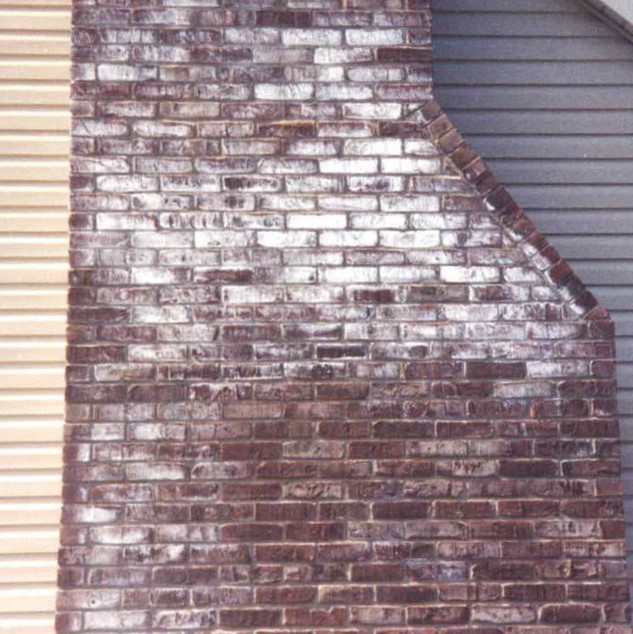Efflorescence and other Leaky Chimney Signs
A chimney leak is nothing to take lightly, no matter how “minor” it seems to be. If a chimney has begun to take in water, the problem will only get worse over time rather than better.
A leak is defined as any situation in which water from rain or melting snow can get into the chimney system either through the masonry or one of the chimney’s components such as the chimney crown, chimney cap or chimney flashing, which seals the gap between the roof and the exterior chimney.
Here are 4 signs that indicate your chimney is leaking or likely will begin to leak soon.
 Efflorescence
Efflorescence
Efflorescence is a white, salt-based residue that forms when water moves into or through a chimney’s bricks. The water can come from outside the chimney in the form of rain, or from inside the chimney in the form of condensation.
In either case, efflorescence should not be ignored – particularly when a lot of it is visible on your chimney’s exterior masonry.
Crumbling masonry
Water erodes bricks and mortar. If you notice areas of crumbling within the masonry surface or on the roof near the chimney, the problem could be old age, but it also could be a sign of water damage.
When bricks and mortar are compromised, water can regularly move into the cracks and spaces and begin a cycle of decay. Worsening matters is very cold air temperature, which causes the water to freeze and expand. What starts as a small chimney leak can eventually lead to major structural damage.
Damp walls and ceiling
Dampness on the walls and ceiling near the chimney/fireplace means water is getting in somehow. The source could be leaks in the chimney’s masonry, roof damage or warped flashing that allows water to move down the chimney below the roof.
No matter the cause of the damp sections, the problem must be addressed quickly before your home’s building materials are seriously damaged and/or a dangerous outbreak of mold begins.
Water in the firebox
If your chimney doesn’t have a chimney cap, water in the firebox could be from rain pouring into the flue. If you do have a cap, this sign could point to a leak in the chimney structure.
Water in the firebox often is accompanied by strong musty odors coming from the fireplace. You’ll often notice the smell before you notice the leak.
 First step: have your chimney inspected
First step: have your chimney inspected
When you notice signs of a leaky chimney, the first thing to do before using your fireplace is to schedule a chimney inspection with a licensed, certified chimney inspector.
The inspection will determine where the leak originates, the extent of the damage and what needs to be done to restore soundness to the chimney.
Solutions may include masonry repair work or rebuilding, repair of the concrete chimney crown, chimney liner repair, chimney cap repair or installation, flashing repair or replacement, masonry waterproofing and other tasks. Only a proper inspection will tell you what is required to solve the problem.
Fluesbrothers Chimney & Fireplace of Kansas City, KS, provides professional chimney inspections, leaky chimney repair, CSIA-certified chimney sweeping and related services that will keep your chimney safe and operating at peak efficiency.
Speak with a chimney expert today at (913) 236-7141 and get on the way to finding and fixing your chimney leak.
The post Efflorescence and other Leaky Chimney Signs appeared first on Fluesbrothers Chimney Service.